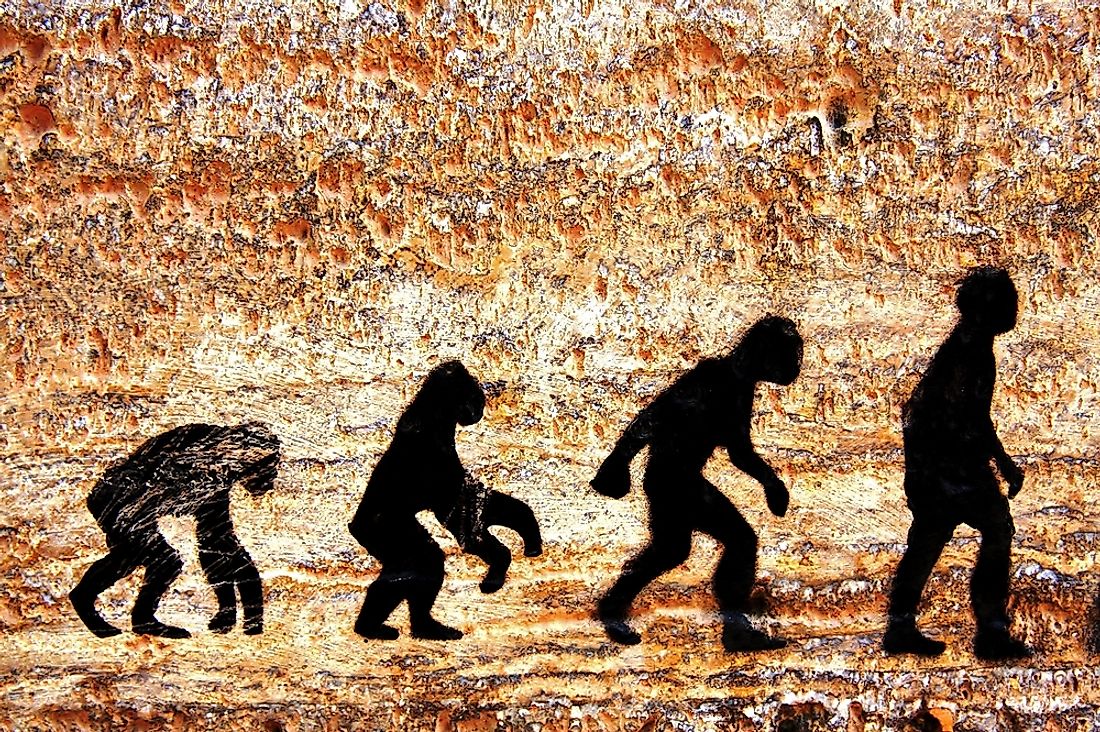Ancient And Modern Human Species

People love to learn about different species of plants and animals and how they have evolved over time. Often overlooked or forgotten is that humans, too, have come in many different species that over time have become extinct. The human species, however, is set apart from other animals due to physical, behavioral, and cognitive characteristics that have evolved over millions of years. Most important of these are: the ability to walk on two legs, communication via language, the make and use of tools, and a large, complex brain. Each human species has had distinct characteristics and abilities and lived at different times, sometimes overlapping, throughout the history of earth. This article identifies those human species.
Homo Naledi
The Homo naledi species was discovered in 2015 when scientists unearthed remains in a cave in South Africa. In total, over 1,500 bones were retrieved. While conducting the analysis, researchers identified several pieces that are similar to modern day humans. The molar teeth, lower pelvic area, and skull shape were all decidedly human. However, the shoulder width and brain size were not. Dating back to approximately 3 million years ago, experts believe Homo naledi could be from the transitional period between the Australopithecus and Homo species.
Homo Habilis
The remains of this Homo species were found in eastern Africa. The Homo habilis is thought to have walked the earth between 2.87 and 1.5 million years ago. When discovered in the 1960’s, scientists believed that the Homo habilis may have been the ancestor of all other Homo species. This creature had an 800 cubic-centimeter brain cavity like other Homo species, but with a smaller face and teeth. Once believed to be the first creator of stone tools, they grew between 3 and 4.5 feet tall and 70 pounds in weight.
Homo Erectus
The Homo erectus species lived between around 1.9 million and 70 thousand years ago. This species is the oldest discovered that demonstrates modern-like human features. The legs and arms are longer in proportion to the torso, thus making it less ape-like; these physical characteristics mean an increased ability for walking and running long distances and less ability to climb trees. The Homo erectus was bigger than Homo habilis and reached between 4 feet 9 inches and 6 feet 1 inch and they weighed anywhere from 88 to 150 pounds.
Homo Heidelbergensis
Next on the evolutionary journey is the Homo heidelbergensis. This species lived between 600,000 and 200,000 years ago and had the largest brain of any of the ancient homo species. This early human likely used fire for food and warmth and wooden spears for hunting large animals. Remarkably, it was the first to build shelters. Males and females grew to sizes similar to present-day humans. Men grew to 5 feet 9 inches and weighed 136 pounds, women, 5 feet 2 inches and 112 pounds.
Homo Neanderthalensis
The Homo neanderthalensis, or the Neanderthal, is the closest extinct human relative to present day humans, and lived 250,000 to 40,000 years ago. Their brain size is the same as or bigger than today’s humans and they were adapted to living in colder climates. Scientists have discovered evidence that this species was able to control fire, make clothes, build shelter, eat plants and animals, and to use symbolic objects. Living throughout Europe and southwestern and central Asia, this early human also buried their dead and marked their grave sites.
Homo Floresiensis
The last known living human species was the Homo floresiensis which existed between 190,000 and 50,000 years ago. Researchers have only discovered remains of the Homo floresiensis on the Island of Flores in Indonesia. This species used stone tools, hunted animals, and fended off predators. However, they had very small brains and only grew to 3.5 feet tall. This small size is thought to have been caused by an evolutionary process called island dwarfism which occurs after generations of isolation with a limited food supply and lack of predators.
Homo Sapiens
After this long evolutionary process, Homo sapiens finally make the scene. This is the present-day human and has been walking earth for 195,000 years. Today’s humans evolved in Africa where they were hunter gatherers and learned to survive in unpredictable environments. Compared to earlier humans, modern Homo sapiens have a lighter skeletal frame and very large brains and have settled in all parts of the world accomplishing extraordinary architectural, artistic, and scientific feats.
Coexistence of Human Species
As noted in the descriptions, 4 human species are though to have existed at the same time. These were Homo sapiens, Homo neanderthalensis, Homo erectus, and Homo floresiensis. Homo sapiens, meanwhile, were the only to have managed to survive the environmental changes that led to the extinctions of other human species. However, some recent hypotheses suggest that Homo sapiens and other humans may have been similar enough to interbreed, and did so to evolve and develop into modern humans.
Early And Modern Human Species
| Species of the Homo Genus | Extant Historical Era |
|---|---|
| Homo sapiens | 195,000 years ago-Present Day |
| Homo neanderthalensis | 250,000-40,000 years ago |
| Homo erectus | 1.9 Million-70,000 years ago |
| Homo habilis | 2.87 Million-1.5 Million years ago |
| Homo floresiensis | 190,000-50,000 years ago |
| Homo naledi | c. 3 million years ago |
| Homo heidelbergensis | 600,000-200,000 years ago |







